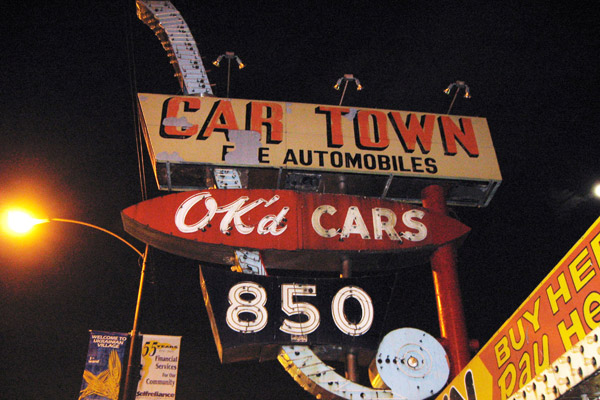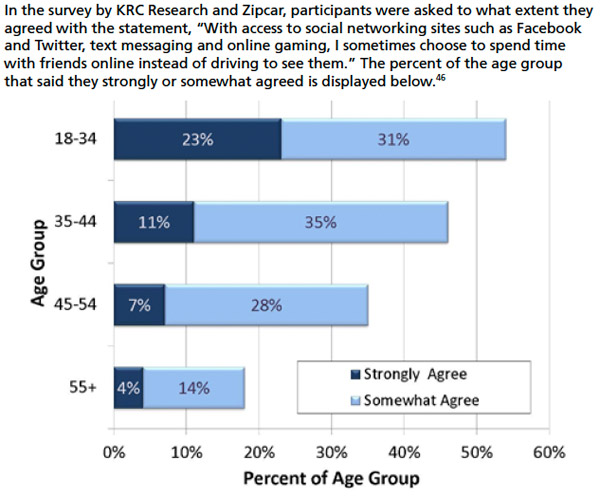
Not long ago, responding to research on "millennials" and their relative disinterest in driving, I mentioned that it lined up with my observations: my friends have few cars between them, either because they don't own one at all or, in some cases, share one car between spouses or significant others (which my wife and I do, and we drive about once a week). Yesterday a new report came out adding more data to support the phenomenon:
This trend away from driving is even more pronounced among young people. The average young person (age 16-34) drove 23 percent fewer miles in 2009 than the average young person in 2001. The report also notes that a growing number of young Americans do not have driver’s licenses; from 2000 to 2010, the share of 14 to 34-year-olds without a license increased from 21 percent to 26 percent.
According to the report, between 2001 and 2009, the annual number of miles traveled by 16 to 34 year olds on public transit such as trains and buses increased by 40 percent.
A lot of the reasons for this are intuitively obvious—the recession, rising gas prices, a return to urban living as desirable. But there's some interesting data down in the study (emphasis mine):
* There's a demand side to the appeal of urban living, but there's also a supply side: "a recent study by the U.S. Environmental Protection Agency of 50 metropolitan areas shows that the proportion of building permits in central city neighborhoods has significantly increased in recent years. In nearly half of the metropolitan areas, the share of new residential building permits in urban core communities
dramatically increased. For example, in the New York City metropolitan area, the central city’s share of residential building permits increased from 15 percent in the early 1990s to 48 percent in the mid-2000s. Over the same time period, the central city’s share of building permits in Chicago increased from 7 percent to 27 percent…."
* There's also a supply side for urban-living-lite in the suburbs, which includes public transit links to the central city: "Arlington Heights in Illinois, which moved to transit-oriented development ahead of many other places in America, has become a cherished place to live…. The city’s Metra commuter rail station, located downtown, is three blocks from the library (which is visited by 2,600 people a day), four blocks from a recreational park, and is surrounded by restaurants, shops, schools, theaters and other amenities—and the Metra commute to downtown Chicago takes only 50 minutes."
50 minutes might seem like a lot, but that's how long it took me to commute from Woodlawn to River North via the 63rd Street bus and the Red Line, and Arlington Heights is about 26 miles outside the city. Living in a place like Arlington Heights often requires a car, but it cuts down on the number of miles that people have to drive. This was my experience when I lived in Oak Park for two years, which, like Arlington Heights, has a respectable density of commuter rail, parks, shops, and libraries. My wife was working in Oak Brook, which required her to drive, but I took the Blue Line into the city. We still had to use the car almost every day, we just had to drive less, and only having one car between us cut down on excess use.
* And this was just totally fascinating:

This may or may not be good, but it does cut down on mileage. (This has not been my experience; I think the biggest IRL substitution of the virtual for the real is in the showing of baby pictures. Now we just totally skip that part, sharing the assumption that we've seen them on Facebook.)
Photograph: the_toe_stubber (CC by 2.0)



